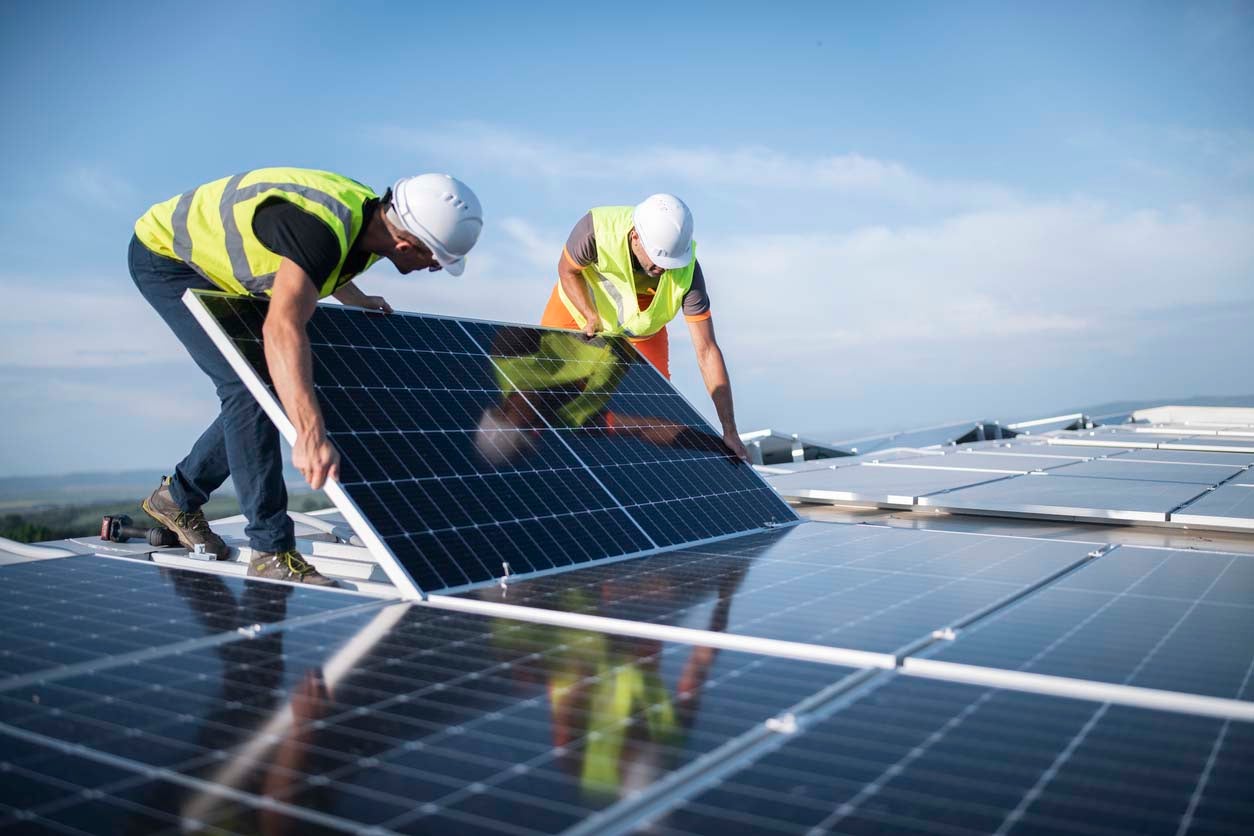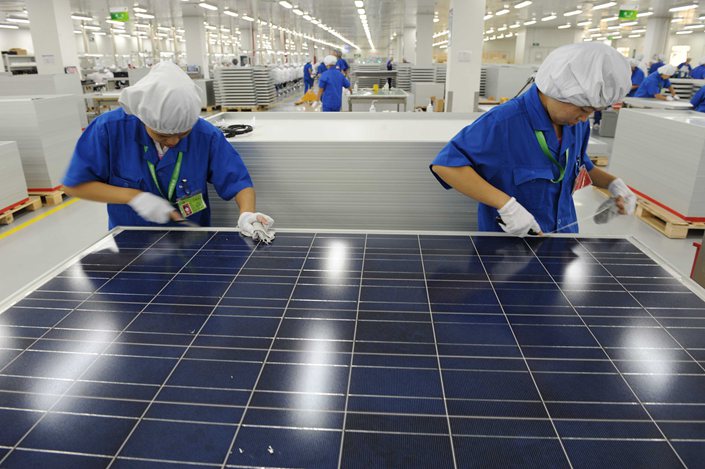Top Rated Solar Installers PA: Our Company Concentrates On The Installation And Management Of Photovoltaic Energy Systems
History and Development of Solar Panel Business
The beginning of solar panel business can be traced back to the 1800s when Alexandre Edmond Becquerel discovered the photovoltaic impact. Would he have thought of how his discovery would transform the way we harness energy?
Early Starts

In 1954, Bell Labs established the first useful photovoltaic cell. This marked a considerable milestone in the history of solar energy. They were initially utilized to power area satellites, but who knew this was just the start?
Evolution and Growth
- In the 1970s, an energy crisis caused increased interest in renewable resource sources, including solar power.
- By the 1990s, advancements in technology and increasing environmental awareness resulted in the growth of photovoltaic panel business globally.
A New Age
As we entered the 21st century, the solar industry witnessed an exponential development. The need for tidy and renewable resource caused a new era in the solar panel industry.
Remarkable Truths
- The world's very first solar energy station was integrated in 1982 in Hisperia, California.
- By 2019, solar energy had actually become the world's fastest-growing source of power.
The journey of solar panel companies has been amazing, hasn't it? The future holds immense potential, with constant improvements leading the way for a sustainable future. Can we envision a world powered totally by solar power?
Moving Forward
Today, photovoltaic panel companies continue to innovate, pursuing more efficient and cost-efficient services. The development of solar energy has actually come a long way, and yet, the journey has actually simply begun.
The Core of Photovoltaic Panel Production
Ever question what enters into producing those glossy, sun-loving solar panels? The process is as excellent as the end product (Residential Solar Panels PA). High-purity silicon, the primary ingredient in photovoltaic panels, undergoes different transformations to ensure its performance and resilience
From Sand to Silicon
Crystalline silicon, the foundation of the majority of photovoltaic panels, stems from basic sand. It's a remarkable journey, isn't it? The sand undergoes a high-temperature response with carbon to form silicon. Nevertheless, this isn't simply any silicon. The silicon used in solar panels is "solar-grade," with a pureness of 99.9999%. It's this purity that allows the panels to successfully convert sunlight into power.
Ingot Formation
When the silicon is pure enough, it's time to form ingots. Picture a big, cylindrical block of solid silicon. How is this achieved? Through a procedure called Czochralski procedure, where the silicon is melted and then gradually recrystallized. It's a slow dance of science, leading to a solid item that is practically as pure as the raw silicon itself.
Slicing into Wafers
The ingots are then sliced into wafer-thin pieces, like slicing a loaf of bread. Each piece is a possible solar cell, waiting to harness the power of the sun. Did you know that the silicon wafers are only about 200 micrometers thick? That has to do with half the thickness of a human hair! The process requires accuracy and patience, but the outcome is a set of wafers all set to be turned into solar cells.
Developing Solar Cells
With the wafer ready, it's time for the magic to occur. The silicon wafer is 'doped' with other aspects like phosphorous and boron to develop an internal electrical field. It's this field that allows the conversion of sunlight into electricity. Complex, isn't it?
Assembly and Quality Control
Solar battery are like puzzle pieces that come together to form a solar panel. The cells are soldered together in a grid-like pattern, then covered with a protective layer of glass. The last action includes strenuous quality assurance checks. After all, it's important that every solar panel performs at its peak, wouldn't you agree?
Expert Suggestion
Constantly remember that even the most optimally made photovoltaic panel can lose effectiveness due to dirt and debris build-up. Routine cleansing can considerably enhance your panels' performance.
Understanding the Environmental Effect of Photovoltaic Panel Companies
Ever considered the ecological footprint of a photovoltaic panel company? Green innovation, such as solar, has transformed our energy landscape, however what about the behind-the-scenes effect?
The Production Process: A Double-Edged Sword
The production process for solar panels requires a considerable quantity of energy. This process, referred to as 'em bodied energy', can be viewed as a kind of 'energy debt'. It's a little like obtaining today's sunlight to power tomorrow's energy requirements. Fret not, the energy payback time is typically shorter than you 'd think!
- The energy repayment duration for photovoltaic panels is typically 1-4 years.
- After this period, the energy produced is basically carbon-free.

Life After Decommission
And what happens when a photovoltaic panel reaches the end of its life expectancy? Can it just be tossed into the trash? No, that would not be really green, now, would it?
A viable service is recycling. While photovoltaic panel recycling is still in its infancy, it holds a world of capacity. Recycling not just keeps products out of landfills but also lowers the requirement for brand-new basic materials.
Accountable Sourcing: More Than A Buzzword
Where does the silicon come from, you ask? Unfortunately, the market's demand for silicon and uncommon minerals can cause devastating mining practices. Responsible sourcing is therefore vital to minimize hazardous ecological effects.
Decreased Carbon Emissions: The Larger Photo
Let's not forget the bigger photo: solar power significantly reduces carbon emissions. As soon as set up, solar panels create clean, sustainable energy, offsetting their preliminary manufacturing footprint.
In other copyright, the environmental impact of photovoltaic panel business is a complicated issue. With accountable practices, the guarantee of a cleaner, greener future is well within our grasp.
Financial Efficiency and Market Share of Solar Panel Companies
Ever wondered why some solar panel companies - Affordable Solar Panels PA outperform others in the market? What sets them apart? The essential depend on their financial efficiency and market share
Financial Efficiency: An Important Sign
Financial efficiency plays a critical role in the success of any service. For solar panel companies, it's no different. Strong financial performance enables these companies to purchase advanced innovation, research study, and development, consequently developing premium, effective solar panels.
How do they accomplish this? With a focus on expense efficiency and tactical financial investments. Business that manage to lower production expenses without jeopardizing on quality tend to fare much better in the market.
Market Share: A Procedure of Success
Market share, on the other hand, is a direct reflection of a company's appeal among customers. A high market share indicates more house owners are picking their photovoltaic panels over competitors.
So, what's the secret recipe for gaining a bigger market share? It comes down to client fulfillment and brand credibility. Business that focus on consumer needs and preserve a favorable brand image are more likely to catch a larger share of the marketplace.
- Consumer Satisfaction: Solar panel companies that deliver trustworthy items and remarkable customer support tend to have higher consumer fulfillment rates.
- Brand name Track record: A strong brand reputation is constructed with time through constant shipment of quality product or services.
Financial Performance and Market Share: The Cooperative Relationship
Interestingly, the relationship between financial efficiency and market share is not one-sided. They feed off each other. A strong financial efficiency can increase a company's market share, while a high market share can improve financial efficiency.
As a solar panel business, stabilizing these two aspects is vital for long-lasting success. A company that neglects either of them might discover read more it difficult to maintain its position in the competitive solar market.
The Takeaway
What does all this mean for you? Whether you're a homeowner aiming to install solar panels or a financier eyeing the solar market, understanding the monetary efficiency and market share of photovoltaic panel business is necessary. They are crucial signs of a company's health and capacity for future development.